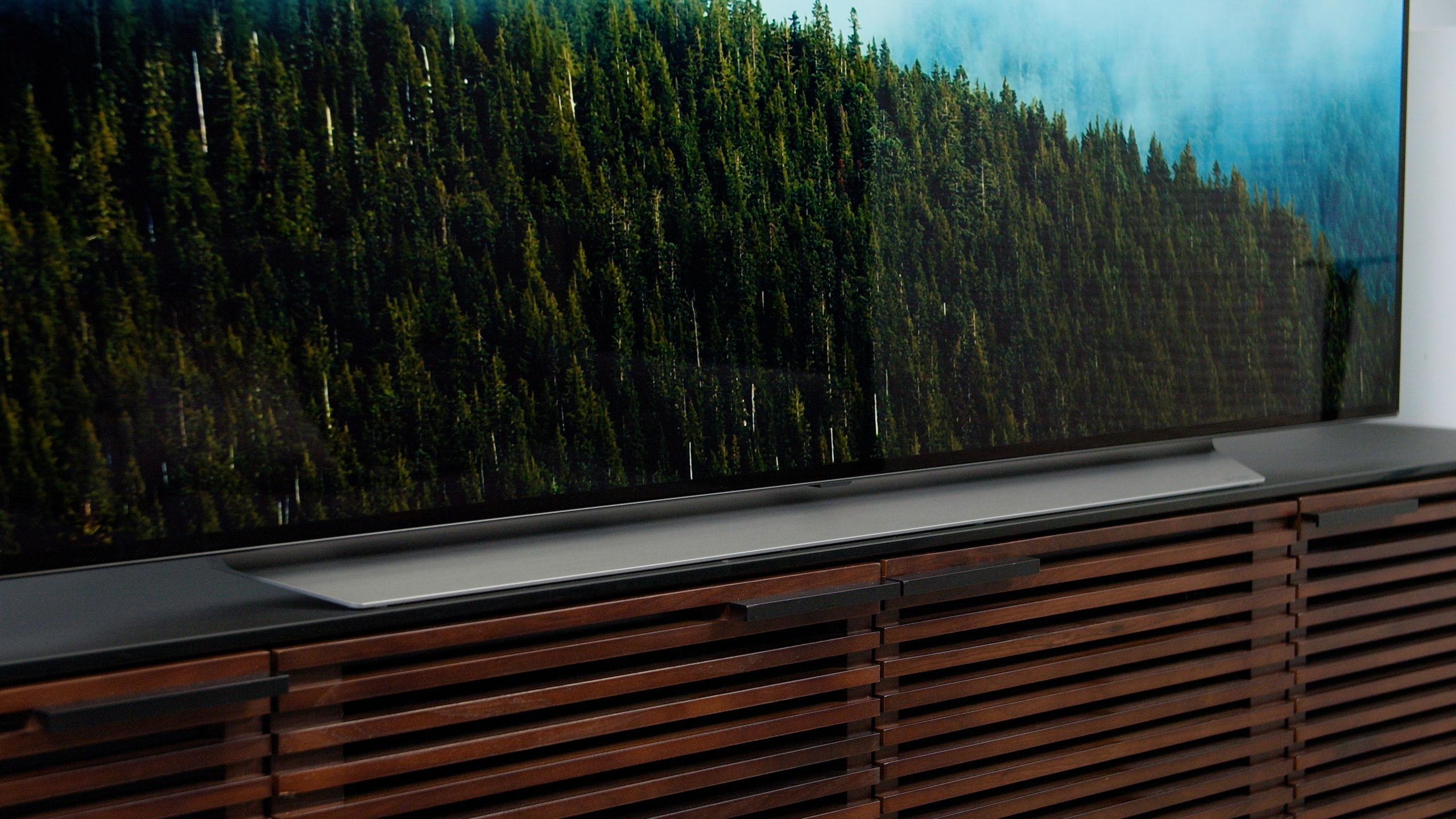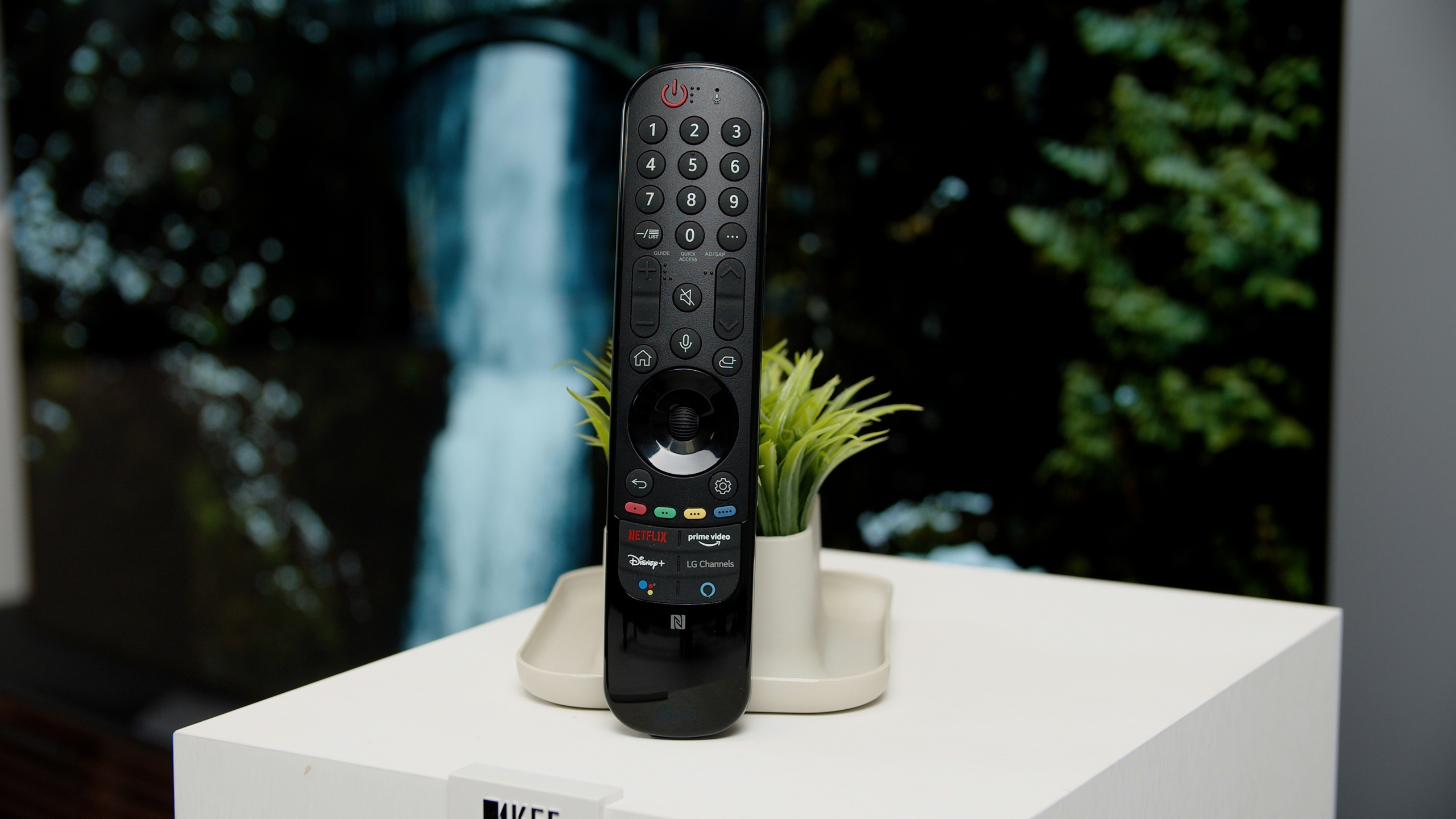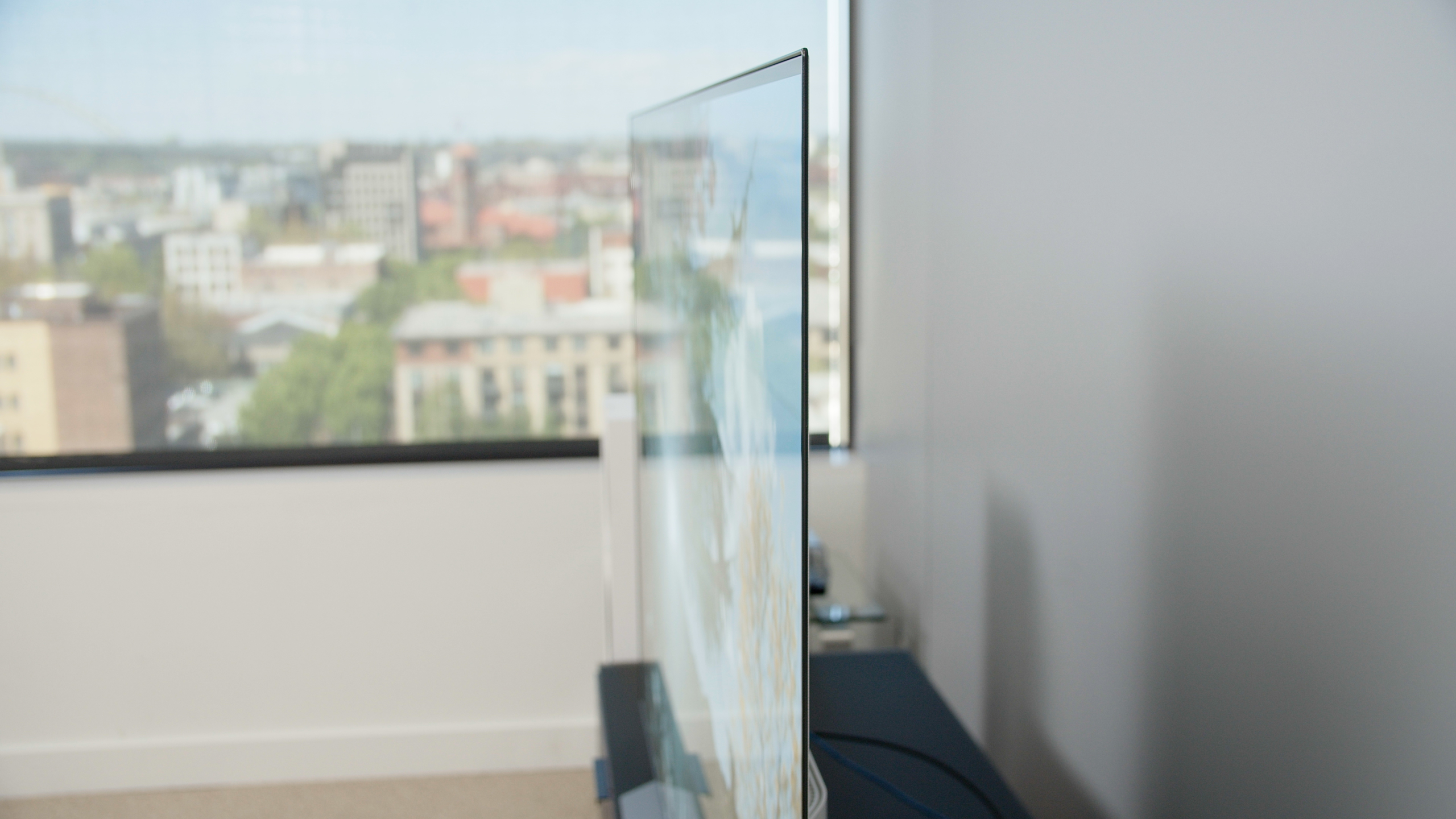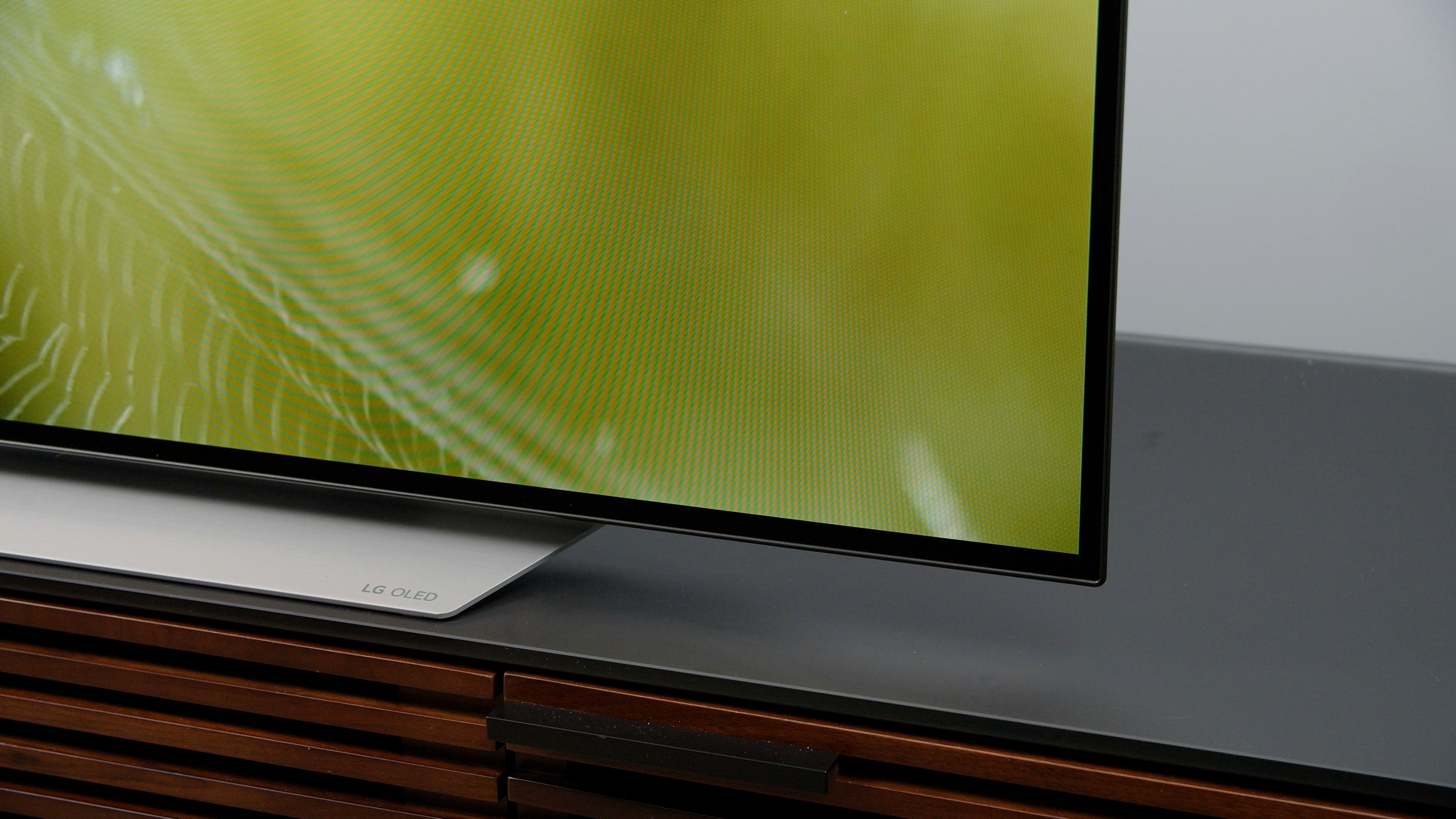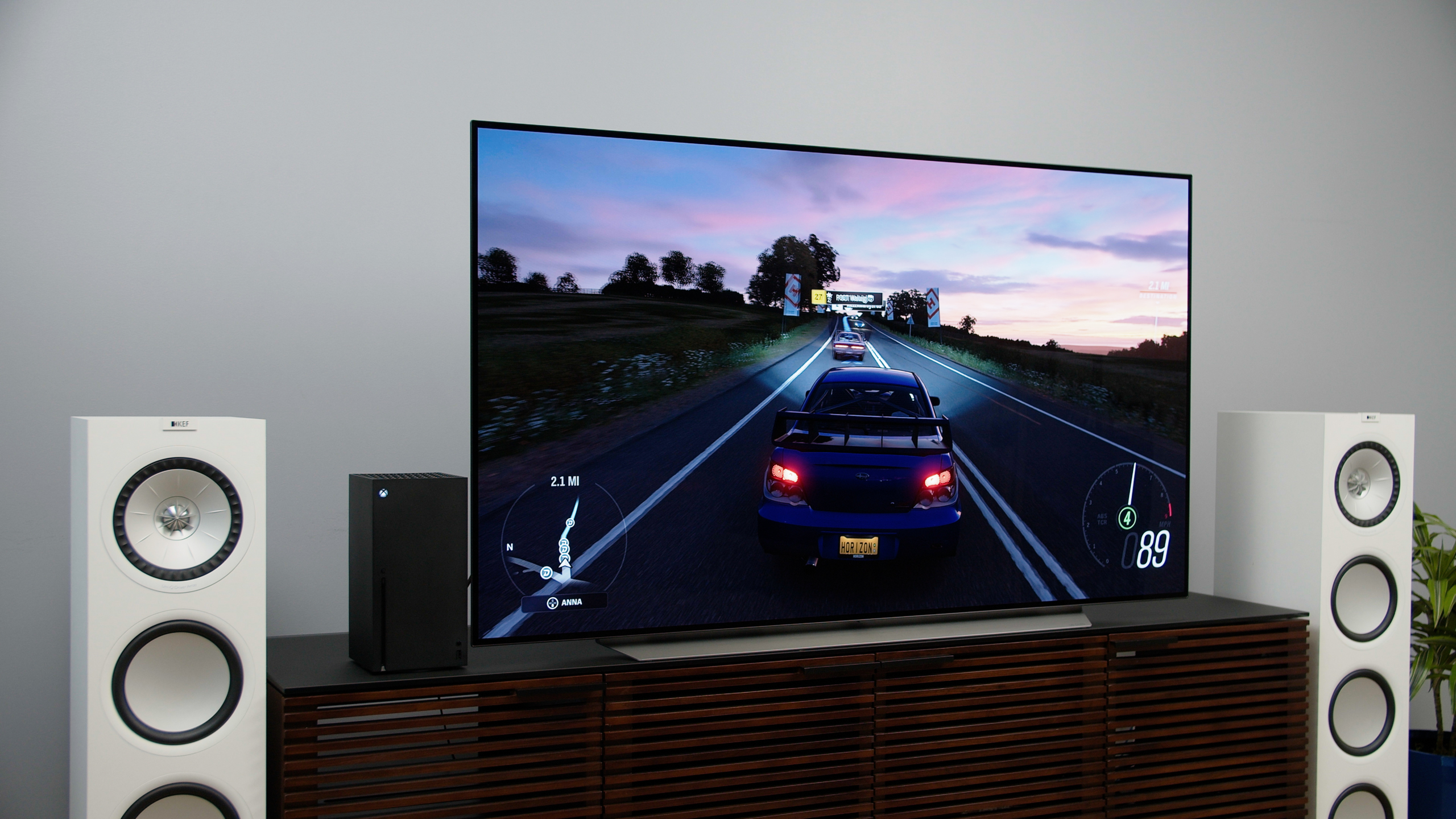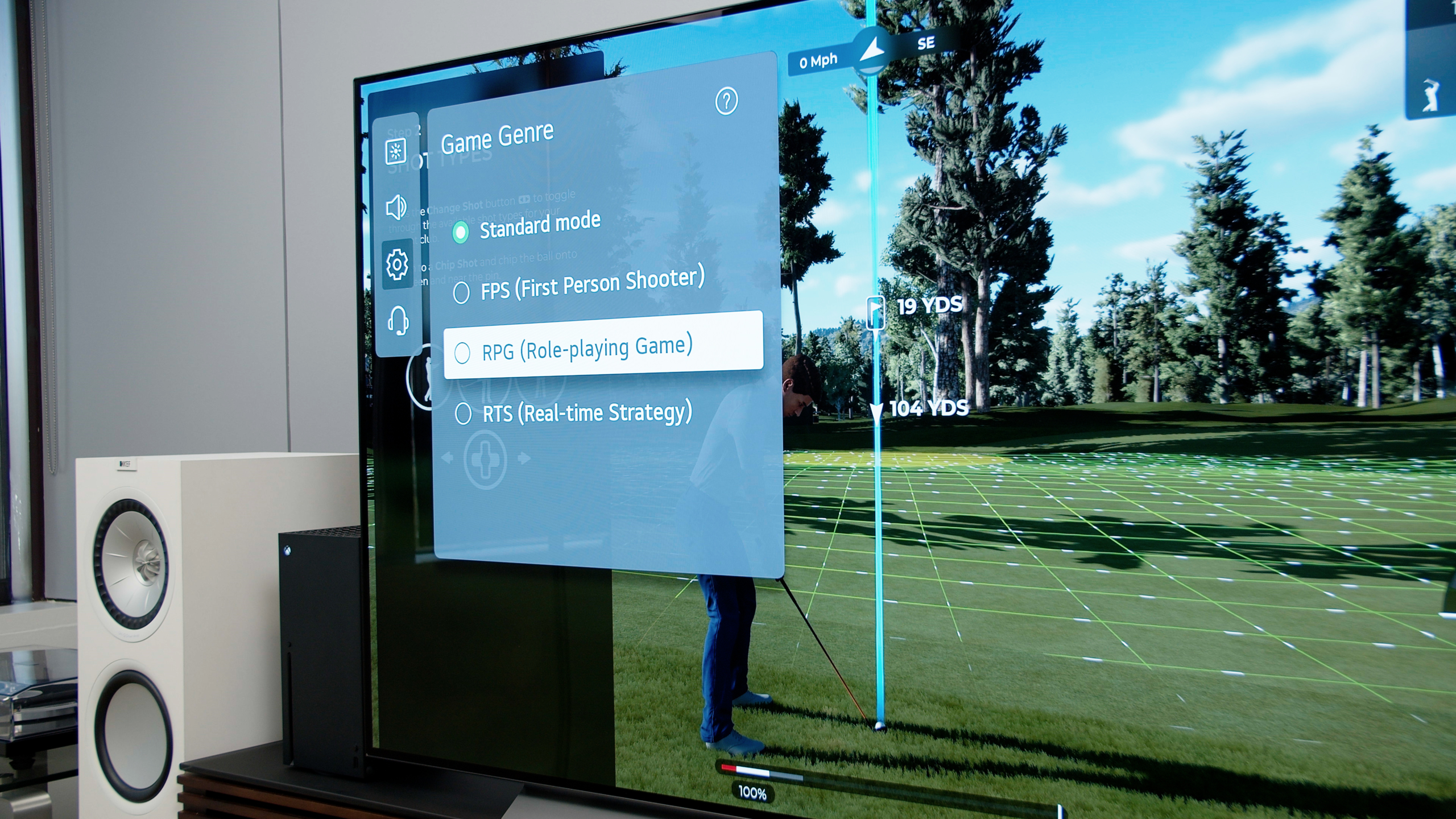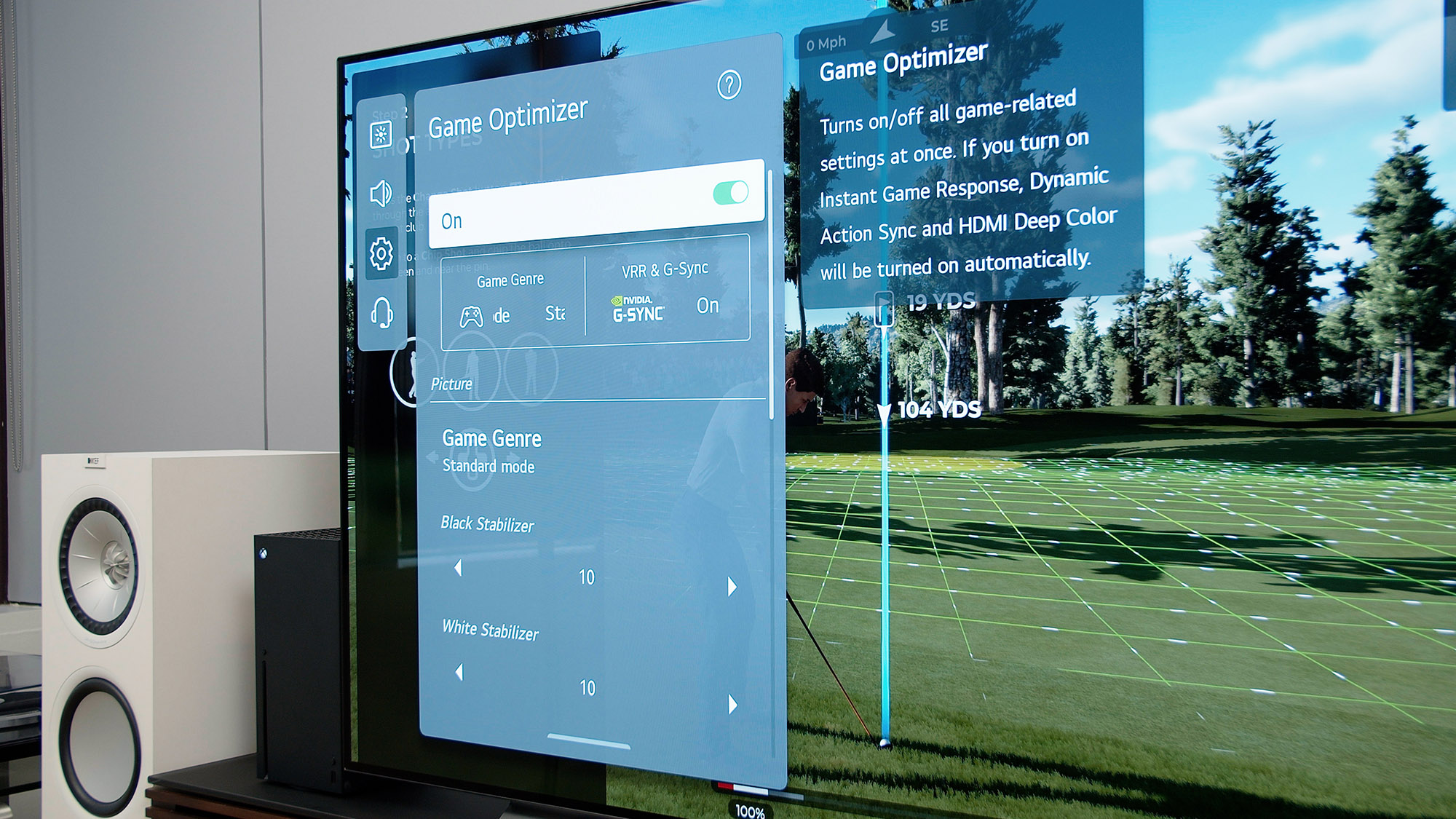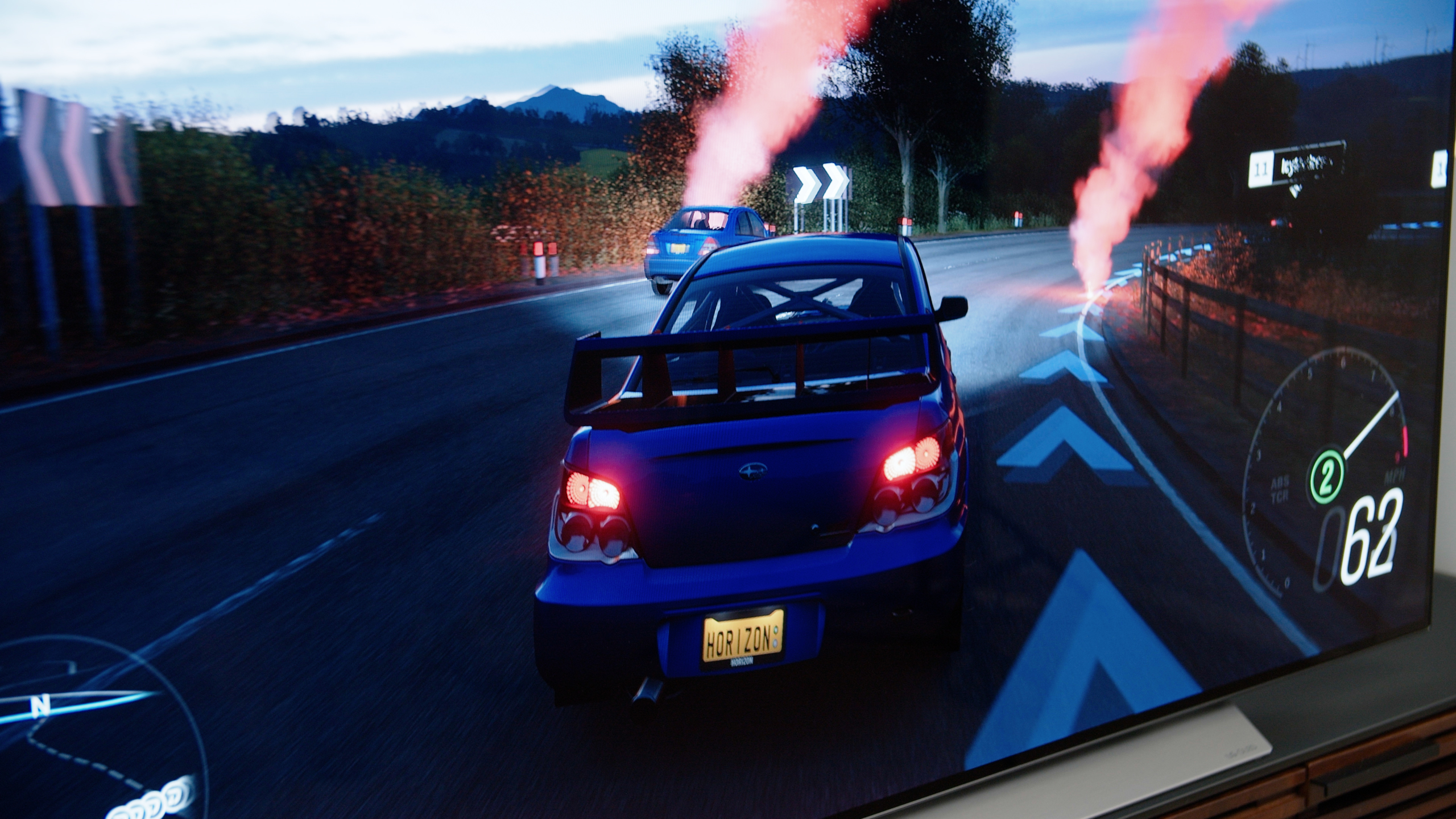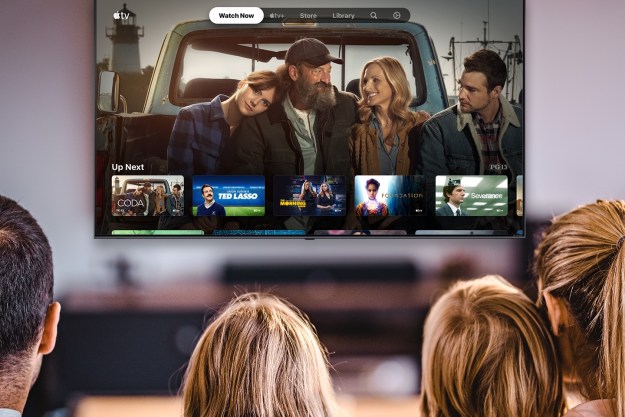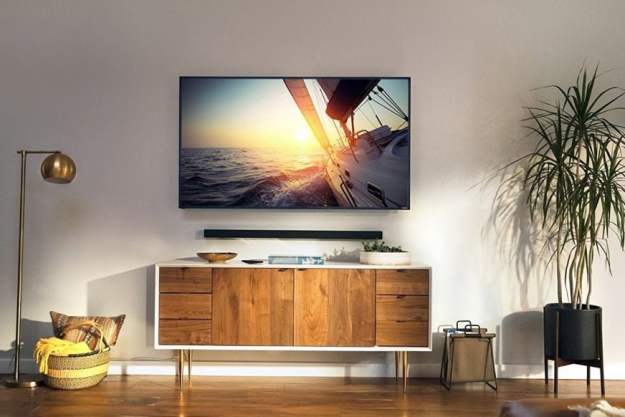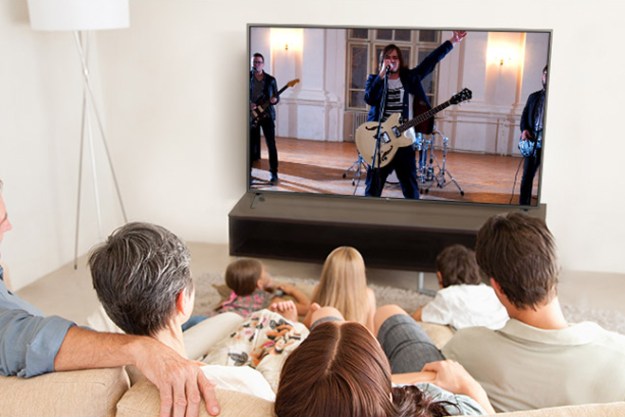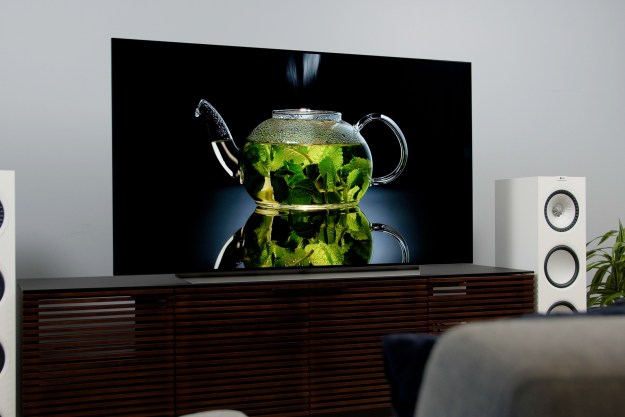
“The LG C1 once again remains the go-to OLED TV. It just makes sense.”
- Excellent Contrast
- Perfect Black Levels
- Improved Processing
- Great For Gaming
- Impressive Sound
- Sluggish User Menus
- Confusing picture settings
If you’re in the market for an OLED TV, you should be looking at the LG C1. LG’s C-Series OLEDs have been one of my top picks (if not the top pick) for our Best TVs list since the C6 was introduced about 5 years ago. LG’s C-Series has seen mostly incremental changes year over year, and this year is no different. However, the upgrades the C1 OLED received over last year’s CX OLED are meaningful, mostly in terms of processing, sound (yes, sound), and gaming.
Since I’ve already told you to seriously consider this TV, let me take the opportunity to explain why.
Historically, LG’s C-Series OLED TVs have had the same panel and processor as LG’s more expensive Gallery Series, or G-Series OLEDs, and better processing than its B-Series OLEDs. This year, with the introduction of the new, less expensive A-Series, the C1 still justifies its slightly more expensive price tag. Compared to the new G1 OLED, the C1 is now considerably less expensive since the G1 has gotten an upgraded, brighter panel, known as OLED evo. All of this to say: The C1 has always struck a sweet spot in LG’s OLED lineup — that sweet spot just got a little sweeter. Now, let’s dive into some details.
Video review
Design
The LG C1 OLED looks exactly like its predecessor, the CX: Striking. I’m still amazed at just how thin the panel is. Mounted on the wall, the C1 appears very sleek and modern. On its stand, the TV looks equally smart with a brushed metal scoop adding both aesthetic and functional benefits. Bezels are virtually non-existent, giving the C1 an “all-picture-no-nonsense” appearance.
This year, the TV’s remote did get a design change. Now slightly shorter in length and with a flattened backside, the new Magic Motion remote now feels better in the hand and — praise be — no longer wobbles when placed on a flat surface. There are few buttons, but still, far more than found on Samsung’s remotes or those accompanying Roku TVs.
One other significant improvement to the remote is that it is less likely that one would click the center scroll wheel and accidentally plunge into an app or menu unintentionally.
LG C1 OLED 4K HDR details
While we reviewed the 65-inch OLED65C1PUB model, our review also applies to the other screen sizes available in the series.
| Screen Size | Model Number | MSRP |
| 48-inch |
OLED48C1PUB
|
$1,500 |
| 55-inch | OLED55C1PUB | $1,800 |
| 65-inch | OLED65C1PUB | $2,500 |
| 77-inch | OLED77C1PUB | $3,800 |
User interface
As with all of LG’s 2021 OLED TVs, the C1 benefits from a redesigned WebOS smart TV interface. Instead of relying on a ribbon of apps lining the bottom of the screen as it has done in years past, LG’s custom smart TV platform now looks a lot more like Google TV than it does Samsung’s Tizen interface. It has large tiles for apps, plenty of suggested content (perhaps too much) and is easier to read thanks to its dark theme.

On the menu side of things, where users will choose picture presets, make picture settings adjustments, sound settings adjustments, etc., WebOs offers explanations of what each setting does and how it will affect the experience. This is something we enjoy about Sony televisions as well.
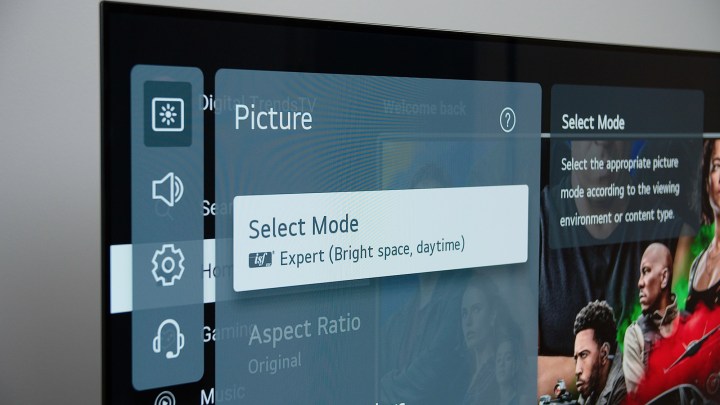
While the TV’s menu of settings is easier to understand, it is now a bit more sluggish. I’m not used to having to see a “loading” circle graphic as the TV brings up different options or the next branch of the menu tree. To be fair, this is something that is mostly only tolerated during the TV’s initial setup. Those who don’t go menu surfing often won’t find this too off-putting.
Under the hood
The first of three core improvements to the 2021 LG C1 OLED is its processor: The Alpha 9 Gen 4. As in years prior, the visible improvements with this next iteration are slight, but not insignificant. I noticed smoother gradients (less color banding) and perhaps slightly better preservation of bright highlight detail, though, admittedly, that last part is difficult to measure — that’s a purely subjective observation.
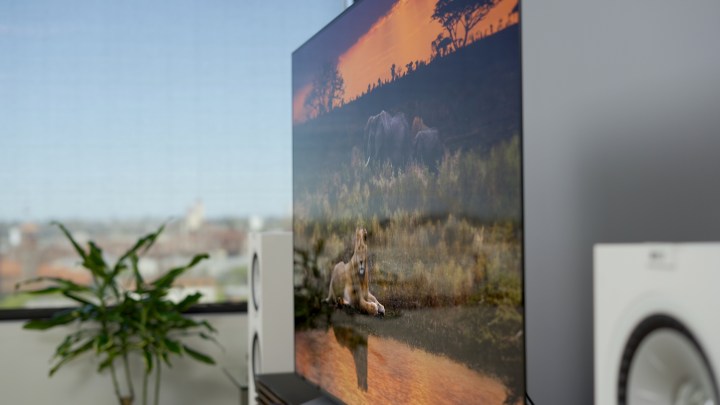
Most of the advantages of the new processor are tied to what LG refers to as AI picture and sound processing — AI Picture Pro, AI Brightness Settings, Auto Genre Detection, and AI Sound Pro. The first three have varied effects on picture quality, while the fourth is intended to improve sound.
To be honest, I didn’t find any of them to be necessary to get a great picture. Also, I’m not sure how much A.I. is really involved here. I understand the processing is detecting various picture elements and attempting to optimize the picture based on those elements — a dark scene in a Batman movie might benefit from a boost to black levels for better shadow detail in dark scenes while maintaining bright highlight detail in a suddenly bright scene, for instance. But generally, I feel the C1 did a great job producing a gorgeous picture without the extra layers of processing and other wizardry. Ultimately, I left all four of those settings turned off and, as I’ll soon reveal, I got great results.
A sound upgrade

I don’t know what LG did for the C1 OLED, but it sounds fantastic — quite a bit better than last year’s CX OLED, actually. Most of the discussion had about sound at a briefing I took with LG was around AI Sound Pro, which I ultimately turned off (it works well for adding virtual surround to movies but I didn’t like what it did to music and soundtracks). But whatever improvements were made to amplification, driver placement, or just general sound tuning have been very effective. This TV sounds great! I’d still recommend at least a soundbar with sub for an upgrade, though.
By the measurements
If you aren’t a stickler for measurements and data, please feel free to skip forward, but I think my nit nerds out there (and I use that term affectionately) will appreciate the following.
A nit, for those of you just joining us here, is a term describing a measure of brightness and since there is a bit of a nit war going on — everyone wants to have a big nit number to hint at their superior
I started with the TV’s ISF Bright picture preset, calibrated the two-point white balance which had me pulling out a bit of red, and in standard dynamic range (SDR), the TV clocked in 195 nits with OLED pixel brightness to the default setting of 80 and peak brightness off. When I turned up the OLED pixel brightness to 100, I measured 233 nits, and when I then set the peak brightness setting to High, I got 335 nits.

Depending on how bright you want your TV to be in SDR for everyday content watching, the C1 should be able to compete with a moderate amount of ambient light in the room.
In
Color measurements were also very good, as they always are, and that bears out in the picture quality, which, let’s just get right to it, is superb.
General picture quality
I somehow forget just how much I like this series of OLED from LG. It gets me every time. If you want to see just how great the C1 can look — well, I have a broad list of suggested 4K Blu-rays I would recommend — but for something accessible to nearly everyone: Check out Our Planet on Netflix in
Top to bottom, the images just look superb.
This TV gets just about everything right. It’s bright enough to do
The upscaling is good — though not a miracle worker as we’ve discussed before — the
Now, we do have to talk about a couple of issues you might run into around motion and shadow detail.
Inherent issues
While incredible technology, OLED TVs have some inherent issues, and incredibly enough, they are tied to areas where the TV excels.
For instance, OLED TVs have an instant response time of under one millisecond. That’s less than one millisecond for an OLED pixel to turn on or off, or switch colors. That’s great for reducing motion blur and a real boon to gamers in most cases. Unfortunately, if you pair that instant response time with low frame rate content — say 24 frames per second or 30 fps — you run into an issue called “stutter.”

That’s stutter, not judder — this TV does fine with playing back 24 frames per second content from a cadence standpoint. The stutter issue has to do with how long a TV has to hold an image before it displays the next frame. Another way of looking at it is, what kind of gap is there between the TV’s response time and the next frame that comes along from the content.
The effect comes off as sort of a flashing that draws your attention to it and away from the object of focus. You definitely tend to notice it. This is where a tradeoff comes into play: You can either put up with the stutter, or you can use motion smoothing to cancel it out, which will bring on “soap opera effect.” From what I understand, many of you reading this don’t mind soap opera effect, so whether this is a downside for you comes down to your personal preferences. If you don’t mind soap opera effect, turn on motion smoothing and you’re golden. If you are a cinematic purist, turn it off and put up with the stutter — because your C1 OLED is otherwise awesome.
The next issue to discuss is shadow detail. Another way of referring to it could be the term “crushed blacks,” which I tend not to use because it feels misleading since it is actually very dark grey that is getting crushed, and even then it isn’t getting crushed, it’s just not showing up. But I digress.
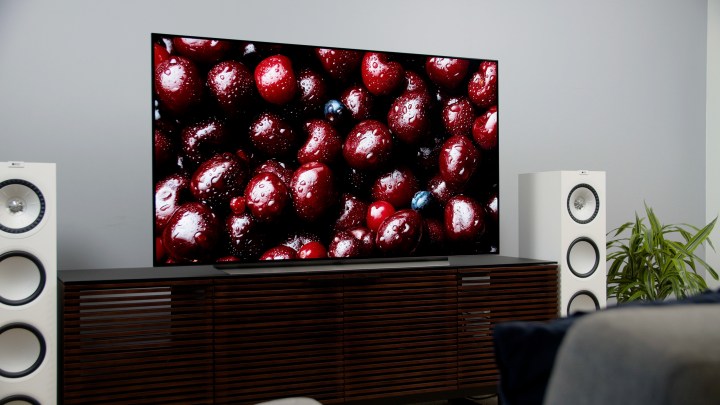
The issue is that parts of the image that should be darker grey tend to display as black on an OLED because OLED materials don’t like to light up at extremely low voltages. Fortunately, LG has a compensation for that which you can manipulate so that you get better shadow detail at the expense of raised blacks, or better black levels at the expense of shadow detail. This can be an issue with extremely dark movies — Prometheus and the opening sequences in Captain Marvel come to mind — but it probably impacts gamers the most. More on that in a moment.
The final concern to address is the potential for screen burn-in. As I have written countless times (sorry, some things just get old after a while, but I know this is very important stuff) OLED screens are based on organic materials that dim as they age. If you overuse any particular color or color pattern for an extended period of time, eventually that area of the screen will dim disproportionally and appear to be “stuck” in the screen. A good example of this would be a station identification “bug” in the lower right corner of a sports/news network, or the ticker that runs along the bottom of the screen showing stock prices or game score updates.
The fact is, screen burn-in is not going to be an issue for most viewers. However, if you are the sort of person who watches the same channel for, say, six or more hours a day, five or more days a week, I would suggest you consider a non-OLED TV — perhaps the excellent Samsung QN90A Neo QLED, perhaps?
Gaming
I think I can be pretty succinct here. The C1 is fantastic for most gaming scenarios. Only LG is arming a good number of its TVs with four HDMI 2.1 inputs, so for that reason alone, it is one of the most versatile TVs for gaming. You also get FreeSync and G-Sync compatibility — I don’t believe any other brand is supporting both yet. The
With LG’s Game Optimizer dashboard “boosting” the input lag reduction, input lag comes in below 10ms. Also, the Game Optimizer dashboard is a great place to make adjustments to black levels for better shadow detail, and there are even presets for different game genres that work pretty well. That’s just a really comprehensive suite of gamer-friendly features, so it’s impossible for me not to call this one of the best TVs for gaming.
Our take

With its beautiful design, excellent picture quality, gaming prowess, and minor improvements over last year’s model, the LG C1 OLED carries the torch as the best OLED TV choice on the market.
Is there a better alternative?
For a brighter OLED TV, the LG G1 is a solid choice. I also expect the Sony A80J to be a solid contender in roughly the same price bracket (although more expensive). For a non-OLED option, the aforementioned Samsung QN90A is also an excellent alternative.
How long will it last?
Given its advanced feature set, the LG C1 OLED should last well into the future. It’s unclear now whether LG’s brighter and slightly more accurate OLED evo panel will trickle down to the C-Series, so I wouldn’t wait around for that to happen. This is a good year to buy.
Warranty
LG provides a one-year limited warranty on the C1 Series OLED provided it was purchased at an authorized LG retailer.
Should you buy it?
Yes, if an OLED TV is right for you and intense brightness for bright-room viewing is not required, the LG C1 OLED offers the best price-to-performance ratio in OLED TVs right now.
Editors' Recommendations
- What is Dolby Vision? The dynamic HDR format fully explained
- The best TVs of 2023: our favorites from Samsung, LG, Sony, and more
- Samsung S95C OLED hands-on review: it’s time to get excited
- The best 4K Blu-ray players for 2023
- The best Roku TVs of 2023: which should you buy?

